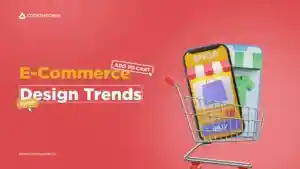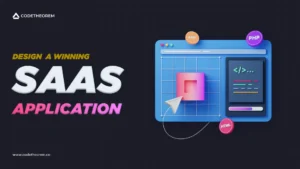The increasing competition and lesser user attention are making conversion even more difficult. And losing any chance of potential conversion is huge. A landing page designed by a UX Expert on a sound digital strategy can bring you great results. So, the question arises of how to make an effective landing page design.
The biggest mishap in landing page design is there are plenty of tips and practices to guide you in building an optimized page. But not all of it will drive you to conversions. Choosing the right practices, tried & tested methods based on the type of industry, and your objective is far more important than anything else. Read more to find out
Article content
- What is a landing page?
- Importance of designing a landing page
- Key differences between: Landing page vs Home page
- Landing page design elements
- How to create a Landing page design?
- You’re doing it wrong | Top mistakes in landing page design
- Top 10 Landing page best practices 2022
- Landing Page metrics you need to track
What is a landing page?
The landing page is the first page a user lands on after clicking on an ad or a link. However, they may have arrived on the page from anywhere like the social media campaign, Email Marketing, PPC ad, or through organic search results. For marketing promotions, landing pages are mostly standalone web pages made for a specific purpose. In short, these carry an objective, with a target audience and intent in driving conversion.
They are made for a specific product, offer, or campaign. One of the landing page examples is when you land on a sign-up page for a contest or subscription. These pages have a minimalist design using white space in their user interface. They intend to encourage users to take action and nothing else.
Importance of designing a landing page
A landing page’s ultimate and primary purpose is to increase conversions. Unlike other website pages, it is focused on the CTAs to bring all the user’s attention toward it. Some of the objectives of a landing page are sales, lead generation, sign-ups for email, free trial sign-ins, and event or webinar bookings.
1. Lead generation & Conversions
When you create a page with the help of a landing page designer, you can drive in more conversions and compel users to engage on your page. With an effective page, you can be sure you deliver exactly what the users need.
2. Goal-oriented
Landing pages are designed for a specific goal. It could be for creating an email list, launching a product, or a marketing campaign. It allows you to track the necessary metrics for your business goals. Overall, it vastly helps lead generation and ultimately contributes to your revenue.
Key differences between: Landing page vs Home page
Even though the landing page and home page do not read and sound the same, they are mistaken to be the same. However, the following table shows the key differences:
| Point of Difference | Landing Page | Home Page |
|---|---|---|
| Goal | Focused on a single goal promoting an individual offerAims at increasing conversions & ROI | Explore the brand & build trust Promoting more engagement-focused on the overall experience |
| Business website | Separate from the actual website | The front page of the website |
| Traffic | Paid & Target driven traffic – From ads | Organic traffic from multiple sources |
| Navigation | Landing is a single page with no navigation | Allows you to visit various pages with top-bar navigation |
| Content | Specific to keyword search & ads | Informational and aims at earning credibility |
| Purpose | Action-oriented | Browser-friendly |
Landing page design elements
To design a good page, you should be knowing what elements to add to the landing page structure. Every web page has it set of components that are clubbed together in a single scroll to serve a purpose. Since these pages are used for multiple objectives, the following are the key components it :
Above-the-fold elements
Above the fold is the section is the first section a user sees when they land on your page. It is called above the fold because the user is able to see the elements without scrolling or clicking anything. The content presented here is the first thing the user encounters and you could see it to your advantage.
More importantly, when the above fold section is encouraging enough then the users will be motivated to scroll down and complete the intended tasks.
Content for landing page design
Content is the key element of a page design. It takes up the majority of the page. It is the key medium of communication on your page. Above all, content helps you to let your users know the value proposition you deliver. It stands as social proof for building trust and credibility among the target audience.
Conversion elements
As the name suggests, the conversion elements contribute highly to converting visitors into customers. The CTAs play a major role in conversions. Here, the placement of CTAs and their copy needs to be user-first and align with the UX design.
Footer
Footer is overlooked most of the time. Here you mention the social media links, additional info, and lead generation forms. You can include all the additional details as well as the contact information in the footer.
How to create a Landing page design?
The following are the key steps for landing page creation:
| Planning & Research | Design | Content | Development |
|---|---|---|---|
|
|
|
|
You’re doing it wrong | Top mistakes in landing page design
Before looking at what are the right way to do things let’s take a look at some of the common mistakes in creating a landing page design.
Complex and cluttered
A user won’t spend more than a few seconds or maybe a minute on your website if you have way too much content and text presented. The best-designed landing pages are the ones with the most simplistic designs. As a result, the user can easily navigate the CTA and complete the intended task. The landing page design needs to be intuitive to be effective.
Bad readability
The truth must be told, one hardly ever reads content with complete attention. Mostly, people simply skim through the page. In such cases, if your page has too much text, or has grammatical mistakes, then the users won’t take it seriously. As a result, it will increase bounce rates. Your page copy needs to be concise, readable, and well-written.
“Good content never fails to amaze the right audience.”
Low-quality images
No matter how much we overlook the images, they still play a major role in the overall experience, and also they influence user behavior. If there’s even a single image with bad quality, it will make users question your credibility. Ultimately, making your page look less authentic in the eyes of your users.
Moreover, the large image file size will affect the page loading time which can be a great hurdle in driving conversions. Without affecting the image quality, reduce the file size and improve your landing page’s performance.
Top 10 Landing page best practices 2022
1. Minimalist design
The simpler the design the better. Nothing speaks class like a minimalist design. Keep the design and content clear and easy to locate. Minimal UI design is the best bet for web design. Simultaneously, make use of white space to highlight the key UI elements on the landing page design.
The look and feel of your design are crucial when you have a strong objective for the landing page creation. A clean design with natural navigation builds a smooth user journey. The copy presented front and center of attention makes it scannable.
2. Visual Focus
Firstly, the above-the-fold area on your landing page design is crucial to keep the users on your page. In other words, you need to place concise and valuable content there along with the proportional use of graphics and other media.
All in all, pairing content and visual elements help in enhancing the user experience. Images help the users remember the information 65% more than anything. Hence, use high-quality original images and downloaded stock photos.
3. Colors
While design and features stay necessary, colors play an equally important role in influencing users’ behavior. Colors carry a tendency to induce certain emotions in humans. Therefore, this is helpful in design as well. Additionally, using contrasting colors is useful in highlighting the important content on your page.
4. Responsiveness
A vast majority of your visitors will be accessing your page through a mobile screen. Hence, you have to build a mobile-first landing page. When building a mobile-friendly design ensure that it is fast and clickable. Meanwhile, building a consistent user experience and UI design for the mobile screens.
5. Headlines & subheadlines
Catchy headlines are a key element for grabbing users’ undivided attention. Headlines are undoubtedly the most viewed element. Your headline should be clear and encourage users to keep reading further.
Further, make use of subheadings to address the frequently asked questions by the users. It will help users find exactly what they are looking for.
6. CTAs for landing page
CTAs are the critical piece of every landing page design. But often the same CTA action is labeled differently just for the sake of it. This leads to confusion. It is best to have a consistent CTA throughout the page.
To make your CTA stand out, keep the size bigger than the rest of the elements and use contrasting colors. Moreover, for the CTA buttons, the copy needs to be persuasive so that users feel they are benefited from clicking the button instead of giving something.
8. Friction reducers
The Friction reducers are the copy added below or with a CTA. They help users overcome their objections about why they should add their detail. For instance, if the page has a sign-up or free-trial CTA they might expect you to ask for their bank details. However, adding a statement like “no credit card required” or “try first, pay later” can help them understand better.
8. Trust Signals
When you are building a product landing page or website landing page, your aim is to drive in more conversions. But that won’t happen if people don’t find your page trustworthy. How do you ensure that every user visiting your page will trust your brand?
Firstly, testimonials are one great way of doing that. Reviews from other users or clients can help you gain credibility as a brand. Secondly, add a small section displaying your achievements, awards, trust badges, and relevant stats/data. The power of numbers never fails to amaze humans. And you can use that to your benefit.
9. Forms
Forms could be anything from a single text box asking for the email to a complete contact us form for user signups. The important thing about a form is its length and the details you ask for. However, choosing a relevant form length depends on your objectives and the type of product or service you offer. For the landing page design, asking for excess information may not be ideal but you have to decide what information you need to complete the signup process.
10. A/b testing
A/B testing is the most ideal way to test your landing page design. When designing make sure you create multiple versions to test which performs better when user testing. The A/B testing is also applicable to the content, especially headlines.
Landing Page metrics you need to track
These metrics to help you keep track of the traffic as well as the conversions your website is encountering. They help you see how effective your plan has been and whether the landing page design is working for your business or not. The following are some of the design metrics you need to know of and track–
A/b testing
When you present two versions of the same product to users, it can help identify which one of them is more effective and performs better. Further, the UI elements you need to test for your user interface will be CTAs, content, header images, button colors, and more.
Bounce rate
The bounce rate allows you to see the percentage of people leaving your site without interaction or leaving halfway. You can identify the point of interaction where they are demotivated to engage more and leave.
Conversion rate
Conversions are one of the key metrics for a website page. To increase the conversion rate you should focus on landing page optimization through keywords, content, and SEO.
Conclusion
All in all, the above blog has covered almost everything you need to know when building a landing page. At first, it may seem like an easy job but using the right set of elements to meet your objective is a bit tricky. When done right you can see the results yourself of using the best practices. Moreover, the use of the most relevant practices will help build an effective page that helps you achieve your conversion goals.


















